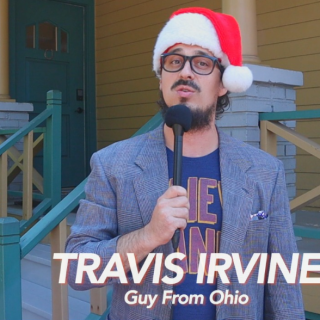Advertisement
Dr. Lawrence Salata doesn't vape. He does, however, encourage his patients who smoke to take up the new craze that is sweeping the smoking world. Salata stopped by the Vapor Station adjacent to his dental practice to talk to the owner about the recent flooding in front of the building. But he left the store with two armfuls of ecigs. “I've seen a significant reduction in burning and staining in the mouths of my patients who have switched from cigarettes to ecigs,” he said. “I think it's a good option for them.”
For those who are wondering, those vapor trails crisscrossing Columbus aren't coming from CMH. They are coming from the legions of ex-smokers who are indulging in the alt-smoke craze that is sweeping Columbus and the entire country. The result is a booming multi-billion dollar industry that didn't even exist just a few years ago. For the non-smoker and non-vaper who wants to know, vaping is the new Rock and Roll for the millions of smokers who are trading in their Marlboros and Camels for Blu and Njoy. Vaping involves a mixture of propylene glycol or vegetable glycerin, nicotine and flavoring which is then vaporized in a small battery powered atomizer. The result is a vapor that is inhaled, simulating the experience of smoking a cigarette, cigar or pipe.
Ecigs, or electronic cigarettes, began appearing in gas stations and convenience stores a few years ago. But the popularity of the tobacco alternative has sparked a new culture that is exploding nationwide. “Vapers” are enjoying a new world of alt smoke toys that have turned the cig placebo into a burgeoning social phenomenon, giving alt-smoke entrepreneurs all the business they can handle.
While ecigs have the look and feel of a traditional cigarette, they do not deliver the volume of vapor and variety of flavors that vapers relish. Most who try the ecigs soon graduate to personal vaporizers, which come in a multitude of elaborate, hi-tech designs and deliver a large dose of flavored vapor.
These vaporizers are filled with a “juice” that is available in hundreds of designer flavors, from strawberry to Snickers. The nicotine content can be adjusted and “stepped down” as the user weans himself or herself off the addictive substance, or not. Some go directly to nicotine-free vapor with no withdrawal. Since the addiction of smoking is a combination of dependence on nicotine and the ritual of partaking in it, vaping satisfies both elements. A recent “Vape Meet” held at Gresso's Restaurant on South High Street drew an overflow crowd of alt-smoke enthusiasts. The event was organized by local alt-smoke retailers who plan to stage such events on a monthly basis. A similar event in Chicago recently drew thousands, and the craze is building momentum on a national scale.
Seeing an opportunity in the new industry, Canal Winchester native Jason Gang founded Westside Vapor in 2008. The company is a wholesaler of its own brand of ecigs, vaporizers and juices, sold in mainstream retail establishments and in its own Vapor Station retail stores. He and good friend James Jarvis, a longtime area rep for Coca Cola, saw the retail potential of ecigs and vaping devices early on and launched their Vapor Station enterprise. There are already six Vapor Station locations in the Columbus area alone, with more statewide and in western Pennsylvania and even more in the planning stages, including a store to open soon in Groveport.
Owners Joshua McBride, Allyn Yarger and Andrew Schmid of Buckeye Vapors are busy dealing with the lunchtime crush of customers at their sprawling 5,000 square-foot store and vaping lounge in Grove City. It features deep leather sofas and coffee tables, where customers can kick back, relax and blow vapor rings to their heart's content. Like most people in the retail end of the business, they started out themselves as consumers of alt-smoke products. The three all left their full time jobs to take the vaping plunge. And like most vapers, their interest in alt-smoke came from one common desire – to quit smoking cigarettes.
Schmid says “I always wanted to quit smoking. Nothing I tried worked. One day, my little sister ran up to me to give me a hug, and told me I smelled like an ashtray. She wouldn't give me a hug. That kind of solidified my deal.” In an attempt to quit, he tried it all – nicotine gum, the patch, hypnotherapy, acupuncture, Chantix. “None of that stuff worked,” he said.
Then he found ecigs. Not terribly impressed, he progressed to personal vaporizers online after finding Westside Vapor's website. But as a truck driver, he found that the batteries didn't last for the long haul.
He realized, “much like Josh and Allyn, there has to be a store...somewhere I can go without waiting weeks,” Schmid said. He found one in Buckeye Vapors, newly opened by McBride and Yarger. In the course of a year he went from being a customer to an employee to eventually a co-owner.
Yarger's story is a familiar one. Like so many others, impending parenthood convinced him and his wife to give up tobacco. But that didn't mean that he necessarily wanted to quit smoking.
“The majority of people who come in here are people who don't necessarily want to quit” Schmid says. “They just want to find a better way of smoking.”
He found that with ecigs and soon became interested in bigger and more elaborate devices. He and vaping buddy McBride soon recognized the commercial potential of a retail alt-smoke store.
“Josh and I were hanging out one night and decided, 'Why not be the first?'” They quickly outgrew their tiny store on Harrison Pike, relocated to their spacious digs in Grove City and set their sights on opening a second location in one of the Jefferson Outlet malls.
Vaping's rise in popularity has not gone unnoticed by America's powerful tobacco industry. All of the major tobacco companies have jumped into the fray with their own line of ecigs, or are in the process of doing so. Swisher is among the latest to roll out its new e-product, hailing it as the “Official e-cigarette of the World Series of Poker.” Jarvis believes that the big tobacco industry is angling to take over the growing vaping market.
“Newport bought Blu about three years ago,” he says. (Now the big tobacco companies) “are out there pushing that ecigs are great, but on the other hand they are coming through the back side talking to the government about wanting to become the official exclusive licensed seller of nicotine. They are trying to confuse people with sleight of hand.”
Gang contends “the tobacco companies are backed into the position they're in now. At first they had no interest in electronic cigarettes whatsoever. By the year 2020 the smoking population could be five percent of what it is today, if it keeps going at this rate.”
While proponents of the alt-smoke craze contend that vaping is a safe alternative to tobacco, citing the arsenic, asbestos cadmium, tar, formaldehyde and hundreds of chemicals found in commercial cigarettes, the health community remains skeptical, pointing out that nicotine remains a highly addictive substance, and that consuming it in vapor form is just a matter of substituting one addiction for basically the same addiction. Health officials also contend that the burgeoning industry needs more oversight.
“Granted there is less, that we know of, poisonous things in the E-cigarettes than there is in a regular cigarette because tobacco leaf itself is toxic, but we also know that nicotine is a poison,” says tobacco addiction counselor and respiratory therapist Laura VanHeest, adding “There is no product control, nobody telling them what they can use and what they can’t use.”
Alt smoke proponents maintain that their products are safe and that nicotine is a naturally occurring substance found in many vegetables, including tomatoes, cauliflower, eggplant and peppers. They contend that the propylene glycol, vegetable glycerin and flavorings used in vaporizers are also safe, citing recent studies that seem to support the claim that vaping presents no danger to user or innocent bystander. Nevertheless, widespread legislation has been introduced in recent years regarding the public use of electronic cigarettes and personal vaporizers. One such ordinance will take effect on April 29th of this year in Chicago, banning the public indoor use of such products. New York already has such a ban in place, as do the entire states of Utah, Arkansas and North Dakota.
Closer to home, the Ohio General Assembly recently passed House Bill 144, which amends sections of the Revised Code to “include alternative nicotine products within the restrictions that apply to the sale or distribution to, and possession or use by, minors of cigarettes and other tobacco products.”
And The Ohio State University includes in its recently effective smoking ban electronic cigarettes and “any product intended to mimic tobacco products, contain tobacco flavoring, or deliver nicotine other than for the purpose of cessation.”
Which begs an interesting question: What if an on-campus vaper were to contend that he was using a personal vaporizer to help him quit smoking? Although the issue hasn't come up yet, it's bound to soon.
Some vapers would rather fight than switch off, however. When faced with a local ordinance banning the public use of ecigs, a Long Island, New York social vaping club successfully challenged the measure in 2009. The group, originally known as the Long Island Vapers Club, incorporated and was renamed the National Vapers Club. The group managed to raise over $100,000 over a period of two years and used it to commission a study used to fight the ordinance. Data collected at Clarkson University’s Center for Air Resources Engineering & Science was analyzed by an independent toxicologist in December of 2011.
The study concluded that “For all byproducts measured, electronic cigarettes produce very small exposures relative to tobacco cigarettes. The study indicates no apparent risk to human health from e-cigarette emissions based on the compounds analyzed.”
The European Clearstream study produced similar conclusions. Dr Farsalinos Konstantinos, principle investigator in the research study, stated “The results are impressive and indicate that, unlike tobacco, electronic cigarette use does not affect the oxygenation of the heart.” However, Konstantinos warned
“We must be cautious and make clear that this does not mean that there are no implications from long-term use. It is currently impossible to evaluate the effects of long-term use but currently available evidence strongly suggests that electronic cigarettes are by far less harmful alternatives compared to tobacco cigarettes.”
Meanwhile, the vaping and ecig industry continues to be a lightning rod for controversy. Many local alt-smoke retailers have expressed resentment over their perceived treatment by the media. Local TV stations both in Columbus and around the country have taken to airing stories warning of the dangers of the new activity, strongly suggesting that alt-smoke dealers are targeting minors. Local retailers interviewed for this story all expressed distrust for the media over the way the vaping is being portrayed.
When a local station recently hyped its upcoming vaping piece by proclaiming “One death already,” Jarvis angrily pointed out that “The only reported death so far was (that of) a 28-year-old man who tried to inject it into his veins. I'm not sure where they get their information.”
When the story finally aired, the station had backpedaled from its claim, not mentioning the supposed vaping death. As for the matter selling to minors, virtually all local retail alt-smoke establishments have notices posted on their doors saying that no one under 18 is permitted to enter without a parent or guardian. Some even contend that the TV media themselves are guilty of promoting ecigs to children.
“I never had a minor try to purchase one until it was on the news,” says Gang. Another perception that makes alt-smoke retailers bristle, fueled they say by media hype, is the notion that their products are being used by kids to smoke dope. While is is possible to vaporize hash oil using a personal vaporizer, it is not what the products are intended for and are not even well suited for that purpose. “People can smoke illegal substances using a corncob pipe, an apple or a pop can. But nobody is trying to ban Pepsi or Coke,” said one retailer.
Since ecig use, for the most part, has not been included in most public smoking bans, the issue of permitting vaping is a new dilemma for businesses. Jarvis says that most restaurants have yet to address the vaping issue, with the notable exception of Buffalo Wild Wings, which prohibits the activity in its corporate-owned stores. BW3 franchise stores generally remain vapor-friendly.
Regarding casinos, Jarvis points out that policies vary, with Hollywood Casino prohibiting ecigs while Scioto Downs Racino has opted to allow them. And while a smoke-free workplace is the law in Ohio, most companies have yet to establish firm policies regarding employees vaping on the job. Said one manager on the condition of anonymity, “I would rather someone puff on an ecig at his desk and keep working than take four or five 10-minute smoke breaks per day. Since there is no odor, no one seems to mind. At least, not yet.”
While much remains uncertain about the long-term effects of vaping, those who cater to the growing demand for alt-smoke products maintain that no matter what the potential risks are, they pale in comparison to the proven risks of smoking tobacco. And while business is great, the real satisfaction they get is from helping smokers get off tobacco. “My grandmother died from smoking,” says Jarvis, “So this is personal for me.”
Or as Yarger puts it, “I sleep great at night.”



